Visitor and Contract Worker Safety Training and Validation

The safety of every individual on site—be it a regular employee, a visitor, or a contract worker—is paramount. From chemical plants to heavy engineering facilities and pharmaceutical manufacturing units, organizations face unique challenges in safeguarding their premises. A critical component of a comprehensive safety management strategy is visitor and contract worker safety training and validation. With decades of experience in environmental health and safety (EHS) across diverse industries, we will explore what safety training is, why it is essential, the legal and compliance obligations it fulfills, and how modern technology can simplify its implementation.
AXIS Gatepass provides a feature packed Visitor and Contract Worker Safety Training system to effectively manage safety training compliance requirement. Contact us for a no-obligation demo, detailed requirement analysis, proposed solution, cost and implementation plan.
What Is Safety Training ?
Safety training is a structured educational process aimed at equipping individuals with the knowledge, skills, and awareness necessary to operate safely in a potentially hazardous environment. It covers essential topics such as hazard recognition, emergency response procedures, proper use of personal protective equipment (PPE), and adherence to standard operating procedures (SOPs).
Importance of Safety Training
Safety training is not just a regulatory requirement, it is a proactive measure that
- Prevents Accidents: By educating individuals about potential hazards and safe practices, safety training minimizes the risk of accidents and injuries.
- Enhances Operational Efficiency: A well-trained workforce is more likely to operate efficiently, reducing downtime caused by safety incidents.
- Builds a Safety Culture: Consistent safety training fosters a culture where safety becomes second nature, encouraging employees to take proactive measures.
- Protects Lives and Assets: In high-risk industries, the consequences of inadequate safety training can be catastrophic. Proper training safeguards human life and protects valuable equipment and infrastructure.
- Boosts Morale and Productivity: When employees and visitors feel safe and confident in their environment, overall morale and productivity improve.
The Need and Importance of Safety Training in Industrial Organizations

Complexity of Industrial Environments
Industries such as chemical processing, heavy engineering, and pharmaceuticals involve complex operations with inherent risks. Workers, visitors, and contractors may be exposed to hazardous chemicals, high temperatures, heavy machinery, and other dangerous conditions. Safety training ensures that every individual understands these risks and follows strict protocols to mitigate them.
Diverse Workforce
Industrial organizations often work with a diverse group of people—employees, visitors, and contract workers—each with varying levels of experience and familiarity with on-site hazards. Comprehensive safety training levels the playing field by providing everyone with the same essential knowledge and expectations.
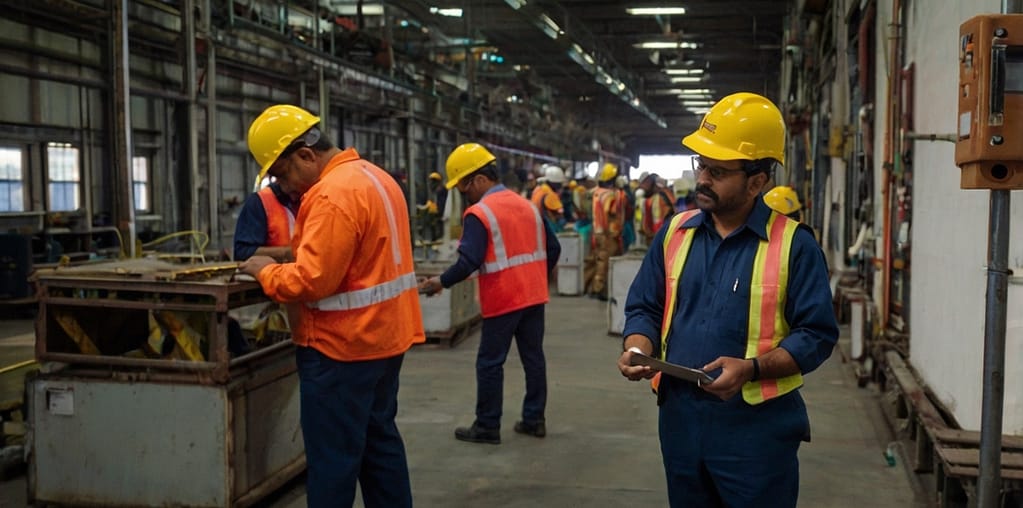

Emergency Preparedness
In the event of an emergency, every second counts. Safety training equips individuals with the skills needed to respond quickly and effectively during emergencies. This might include evacuation procedures, fire safety protocols, and first-aid measures. Without such training, chaotic responses can lead to unnecessary injuries or even fatalities.
Legal and Regulatory Obligations
Many countries, including India, have stringent legal and regulatory requirements governing workplace safety. For instance:
- The Factories Act, 1948 mandates that companies maintain a safe working environment.
- Various state-specific Shops and Establishments Acts require accurate record-keeping of attendance and safety compliance.
- Industry-specific regulations may also apply, particularly in sectors handling hazardous materials.
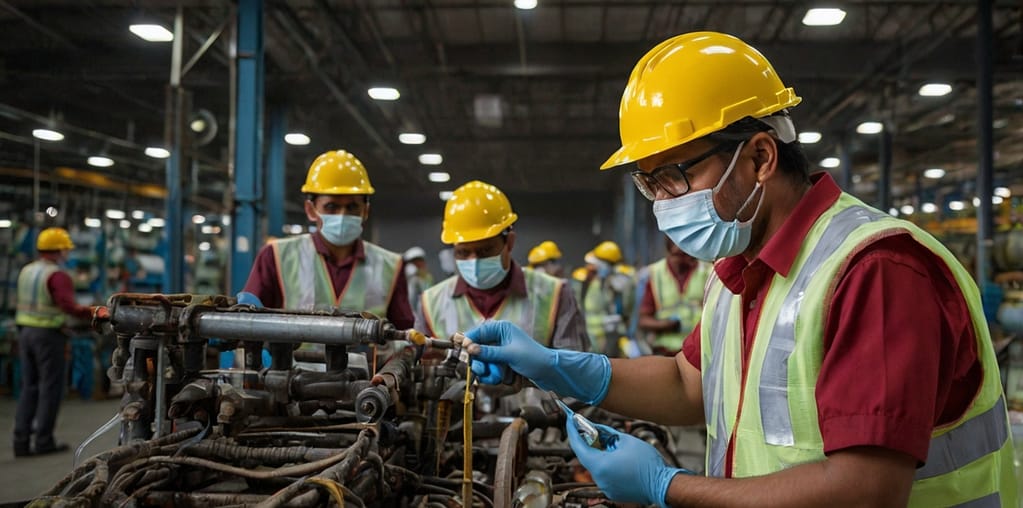
Failure to comply with these legal requirements can result in severe penalties, legal liabilities, and damage to an organization’s reputation. Safety training not only ensures compliance but also demonstrates a commitment to the well-being of all stakeholders.
Legal and Compliance Obligations
Regulatory Framework
Safety training programs are often mandated by various national and local regulations. In India, companies are required to comply with safety standards laid out by:
- The Factories Act, 1948, which specifies the working conditions and safety measures for industrial workplaces.
- State-specific regulations under the Shops and Establishments Acts that govern working hours, emergency protocols, and record-keeping.
- Industry-specific guidelines for sectors like pharmaceuticals, chemicals, and heavy engineering that outline specific safety training requirements.
Documentation and Record-Keeping
Accurate record-keeping is critical for demonstrating compliance during audits and inspections. A modern safety training system should:
- Maintain digital logs of all training sessions and tests.
- Capture the date, time, and identity of each individual who completes the training.
- Generate reports that can be easily submitted during regulatory inspections.
Liability Reduction
By ensuring that every visitor and contract worker has undergone mandatory safety training and passed a validation test, organizations can significantly reduce their legal liabilities. In the event of an incident, documented proof of training can serve as evidence that all necessary precautions were taken.
Implementation Made Easy
Our advanced safety training application simplifies the compliance process. It ensures that all required training and testing are completed before granting access, thereby automating record-keeping and reducing administrative overhead.
How AXIS® Gatepass Revolutionizes Safety Training and Validation
Our visitor and contract worker safety training application is designed to meet the rigorous requirements of modern industrial organizations. Here’s how it works:

Verification and Validation of Safety Training
Before granting entry, every visitor or contract worker is required to undergo a safety training program and clear a test. The system automatically verifies whether the individual has successfully completed the training.
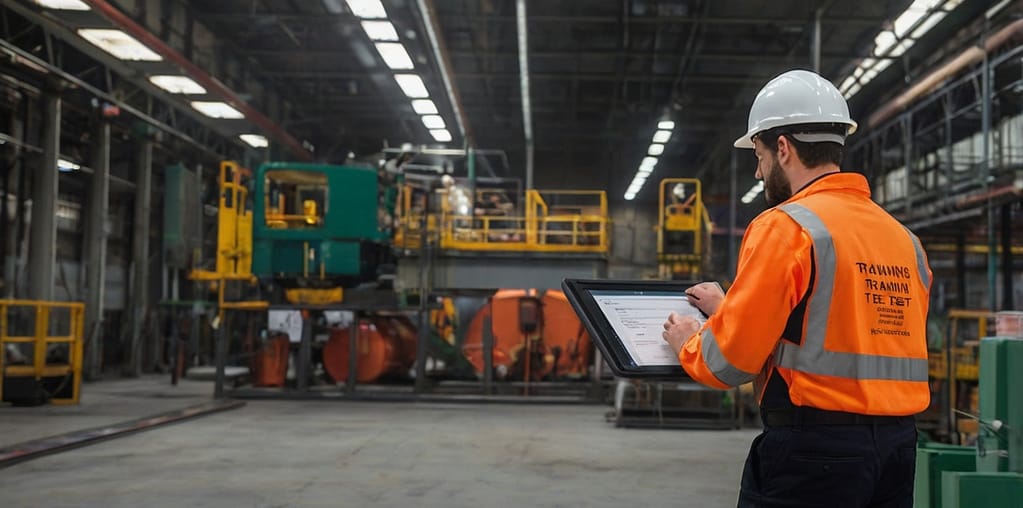
Real-Time Status Check
The application checks the training status in real time. If an individual’s safety training test validation is current, they are allowed entry; if not, they are prompted to revalidate their safety training.

Instructional Video and Training Module
Interactive Video Display – You can upload your organization’s safety training instructional video, which can be displayed on wall-mounted displays, kiosks in training rooms, or near entry gates. This ensures that all individuals receive consistent and accurate training. The module allows you to upload multiple Videos for
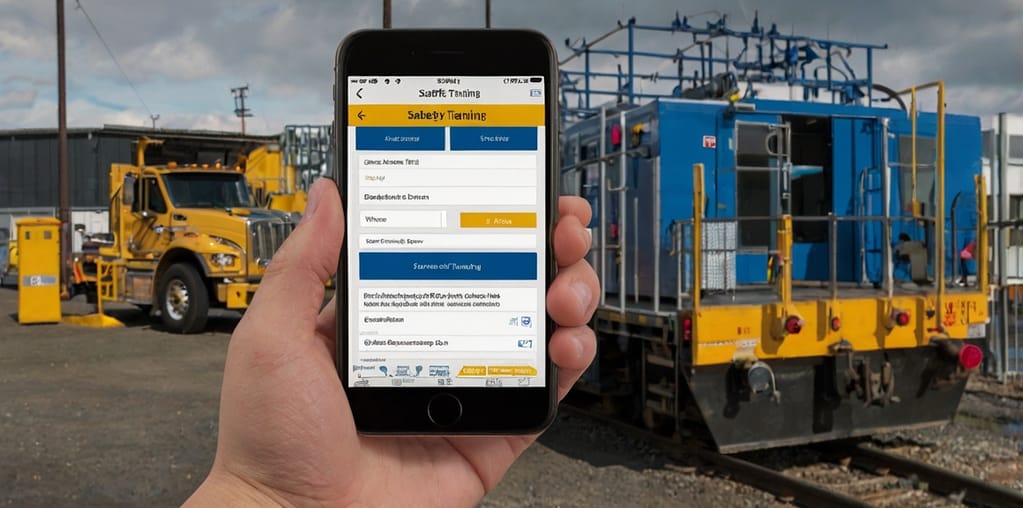
Mobile Compatibility
For added convenience, visitors can access the safety training and test on their mobile devices. A training link is sent during the appointment confirmation, allowing them to complete the training at their convenience before arriving on-site.

Multilingual Support
Language Options: Recognizing the diversity of the workforce, our application offers multilingual training modules. Users can select their preferred language for the training and test, ensuring clear understanding and compliance across all language groups.
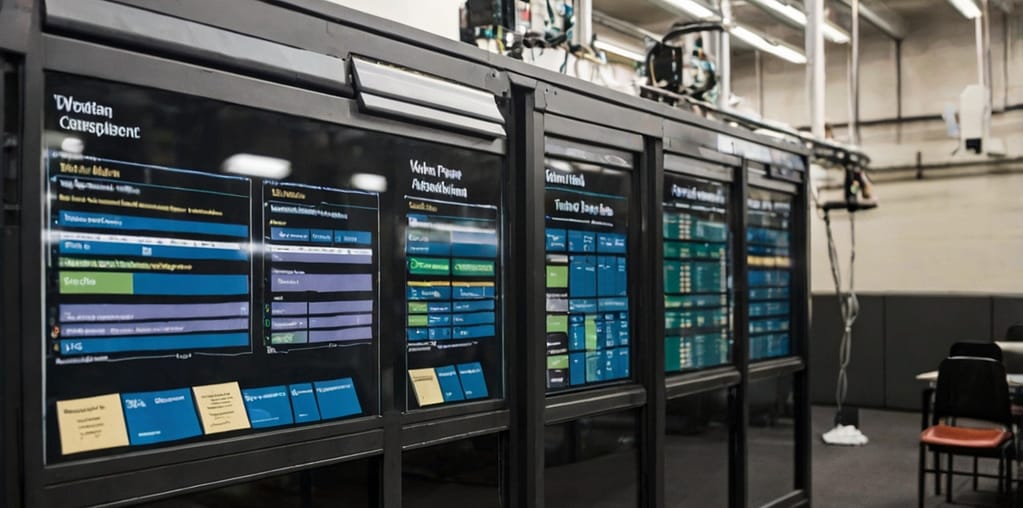
Comprehensive Reporting
Digital Records: The system automatically logs each training session, test completion, and validation check. This data is stored securely and is readily available in various report formats (Excel, PDF).
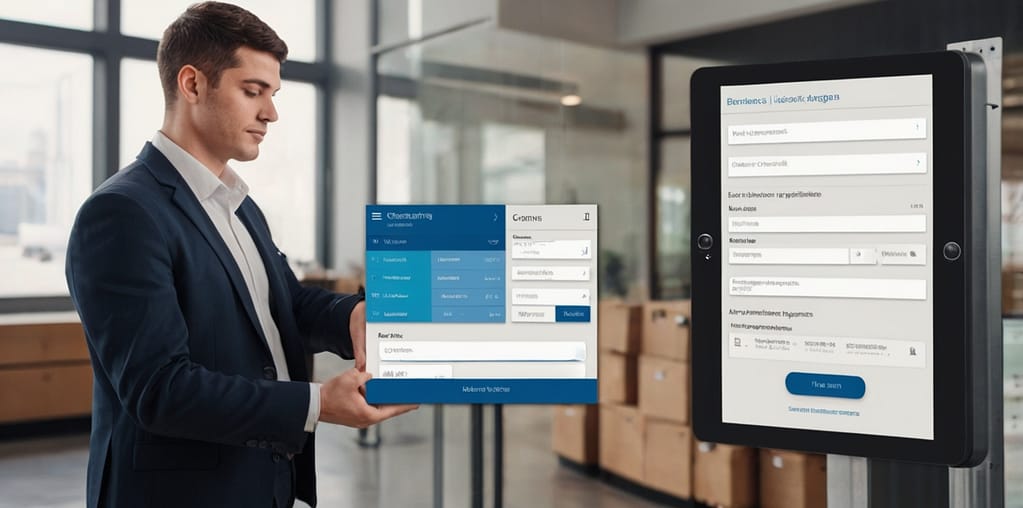
User-Friendly Interface
Easy Navigation: Our application boasts an intuitive and user-friendly interface that requires minimal training to use. This is critical for ensuring high adoption rates among visitors and contract workers.
Benefits of Implementing Visitor and Contract Worker Safety Training
Enhanced Safety and Operational Efficiency
Implementing a robust safety training system ensures that every individual on site is well-informed about potential hazards and emergency procedures. This reduces the risk of accidents and improves overall operational efficiency. In case of an emergency, quick access to headcount and training records can facilitate an organized evacuation and targeted emergency response.
Legal and Regulatory Compliance
By automating the training and validation process, organizations can effortlessly meet the legal and regulatory requirements that govern workplace safety. This not only protects the organization from potential legal penalties but also reinforces a culture of safety and responsibility.
Cost Savings and Reduced Liability
Investing in comprehensive safety training reduces the likelihood of accidents and safety incidents, thereby lowering direct and indirect costs associated with workplace incidents. A documented training process also provides legal protection and can mitigate liability in the event of an accident.
Improved Data Management and Reporting
Our application’s robust reporting capabilities allow organizations to generate detailed compliance reports, track training completion, and analyze safety trends over time. This data-driven approach supports continuous improvement and proactive safety management.
Scalability and Flexibility
The modular design of our application makes it easy to scale and customize based on the specific needs of different industries—be it chemicals, heavy engineering, pharmaceuticals, or any other sector. With mobile compatibility and multilingual support, the system is versatile enough to meet the diverse needs of modern industrial workplaces.
Industry Insights and Best Practices
Drawing from years of experience in environmental health and safety, we can attest that the most successful organizations are those that prioritize proactive safety measures. Here are a few best practices gleaned from industries ranging from hazardous chemicals to heavy engineering:
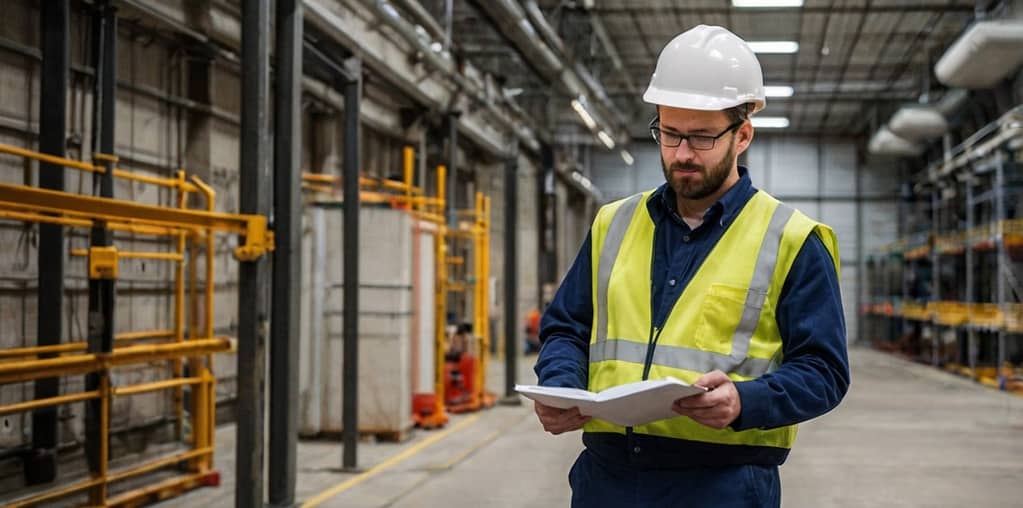
Continuous Training and Revalidation: Safety is not a one-time event but a continuous process. Regular revalidation of safety training ensures that visitors and contract workers are always up-to-date with the latest safety protocols.

Centralized Data Management: Digital solutions that centralize training data, audit trails, and compliance reports significantly reduce administrative burdens. This centralization helps in quick decision-making and effective response during emergencies.

Customizable Training Modules: Different industries face different risks. Customizable training modules that can be tailored to specific hazards and operational environments are essential for effective safety training.

Integration with Access Control Systems: Linking safety training validation with physical access control systems ensures that only individuals who have successfully completed their training can enter the facility. This integrated approach minimizes human error and enhances overall security.

Leveraging Technology for Engagement: Using interactive videos and mobile applications for safety training not only improves engagement but also ensures that the training material is easily accessible and understandable for a diverse audience.
Finally
The safety of visitors and contract workers is a critical priority for any industrial organization. Effective safety training and validation are not merely regulatory requirements; they are fundamental to creating a safe and efficient work environment. By implementing a modern, digital safety training system, organizations can ensure that every individual is well-prepared to handle on-site hazards, thereby reducing risk, lowering liability, and enhancing operational efficiency.
Our comprehensive safety training application is designed to meet these needs head-on. With features such as real-time validation, multilingual support, mobile compatibility, and robust reporting capabilities, our solution empowers organizations to seamlessly integrate safety training into their overall EHS strategy. The system not only streamlines the training process but also provides actionable insights through detailed audit trails and analytics, making it an indispensable tool for modern workforce safety management.
Investing in such a system is a strategic move that safeguards your organization while promoting a culture of safety and accountability. It’s time to embrace the future of safety training—one that leverages technology to protect your people and optimize your operations. If you’re ready to transform your safety training process and ensure compliance while enhancing the overall safety of your premises, contact us directly for a personalized demonstration of our innovative safety training application. Together, let’s create a safer and more productive workplace for everyone.
Disclaimer: The perspectives and recommendations shared in this post are based on industry trends and the evolving needs of modern organizations. Please consult with our sales and technical experts to tailor our solution to your specific business needs.
Visit for more such Facility management solutions
